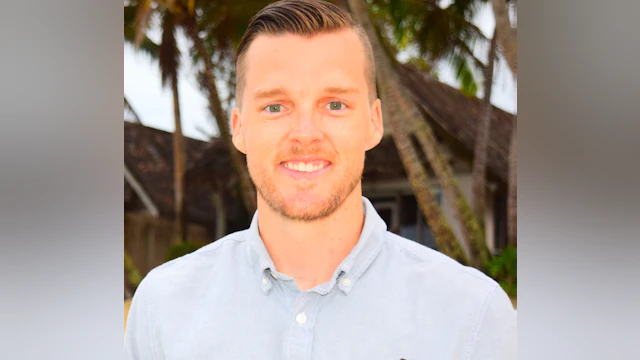The Research Roundup is a regular update of recently published findings in suicide prevention research. AFSP-funded studies included in this roundup examined how…
- The needs of individuals bereaved by a sudden loss can be better understood
- The tendency to act rashly when in extreme distress relates to suicide among people with schizophrenia spectrum disorders
- Sleep can be measured in different ways to assist suicide prevention researchers, and
- The genetics involved in suicide death and suicidal behavior differ

Researcher: Jamison Bottomley, MS
Institution: University of Memphis
Grant Type: 2018 Pilot Research Grant - $30,000
Grant Title: Surviving Suicide and Opioid-related Loss: Examining Needs, Support, and Grief Trajectories
Experiencing bereavement by a sudden death – such as suicide loss, fatal overdose, or natural sudden loss – can contribute to an individual’s vulnerability for developing a variety of mental health difficulties, including posttraumatic stress disorder (PTSD), mood-related disorders, and prolonged grief disorder. Difficulties with grieving a sudden death have also been linked with a risk for suicidal thoughts and behaviors. Despite these established risks, there has been a lack of knowledge pertaining to the bereavement-related needs of sudden loss survivors.
In order to gain more understanding of the potential needs of people who have experienced a sudden bereavement, Dr. Jamison Bottomley recruited 403 sudden loss survivors to evaluate the effectiveness of the Sudden Bereavement Needs Inventory (SBNI), a new psychological measure developed by a community steering committee to assess what individuals bereaved by a sudden death need in order to overcome the difficulty of their loss. The SBNI contains twenty-two items divided into six categorical areas of needs: meaning-making, informational, emotional, pragmatic, spiritual, and relational needs. After administering the SBNI to participants, Dr. Bottomley found that the measure accurately reflected the particularities of each individuals’ burden, and that it may be useful for detecting the kinds of difficulties that uniquely underlie prolonged grief symptoms, traumatic stress reactions, and anxiety. These findings support the applicability of the SBNI for understanding suicide loss bereavement.
Citation: Bottomley, J. S., & Smigelsky, M. A. (2022). Bereavement in the Aftermath of Suicide, Overdose, and Sudden-Natural Death: Evaluating a New Measure of Needs. Assessment, 0(0), 10731911221081139, http://dx.doi.org/10.1177/10731911221081139

Researcher: Matthew Hoptman, PhD
Institution: Nathan S. Kline Institute for Psychiatric Research
Grant Type: 2018 Standard Research Grant - $100,000
Grant Title: Neural Correlates of Emotional Regulation in Psychosis with Suicidal Ideation and Behavior
The presence of suicidal ideation and behaviors (SIB) in people with schizophrenia spectrum disorders (SSD) is a serious public health problem. The mechanisms linking the two are understudied. Along with the psychiatric symptoms common to SSD diagnosis (e.g., psychosis, depressed mood, and dysregulated behavior), one potential factor that has been suspected to be at play is negative urgency, which is the tendency to act rashly when in extreme distress, which could contribute to suicidal behavior.
To test this hypothesis, Dr. Matthew Hoptman and his team enrolled 35 individuals with schizophrenia spectrum disorder and a range of severity in suicidal ideation and behaviors, with one group having little to no history of SIB and the other having significant history of SIB as measured by a standard instrument of suicidal ideation and behavior. After assessing for a variety of factors that could potentially distinguish the two groups, Dr. Hoptman found that negative urgency in tandem with psychiatric symptoms strongly predicted suicidal ideation and behaviors, making the case for further investigation with a larger sample.
Citation: Hoptman, M. J., Tural, U., Arnold, M. S., Collins, K. A., Evans, K. T., Irvin, M. K., Parincu, Z., Rette, D. N., Sparpana, A. M., Sullivan, E. F., & Iosifescu, D. V. (2023). Suicidal ideation and behavior in schizophrenia: The role of negative urgency and psychiatric symptoms. Schizophrenia research, 254, 173-175, http://dx.doi.org/10.1016/j.schres.2023.02.006

Researcher: Catherine Glenn, PhD
Institution: University of Rochester
Grant Type: 2017 Young Investigator Grant – $85,000
Grant Title: Sleep Disturbance and Short-Term Suicide Risk in Youth After Psychiatric Hospitalization
Disturbances in sleep are often associated with suicide risk. Researchers who study sleep and suicide often use actigraphy or sleep diaries to monitor individuals sleep patterns, but typically not both. Actigraphy is a non-invasive method of monitoring human rest/activity cycles (typically done with a wristwatch movement detection device) and sleep diaries are daily assessments in which individuals self-report on sleep. There has been a question as to how well the results from these two options agree with each other, especially in adolescents with psychiatric and sleep disorders.
In her study, Dr. Catherine Glenn and her team examined adherence to, and agreement between daily sleep diaries and actigraphy among 53 adolescents with psychiatric disorders in the 28 days following discharge from acute psychiatric care. Dr. Glenn found that there was both agreement and discrepancies between the two methods depending on what specific aspect of sleep was being measured and when participants were completing assessments. Agreements were found for total sleep time, sleep onset latency (how long it takes to fall asleep), and sleep efficiency, while discrepancies were found in number of nighttime awakenings and wake after sleep onset. These results provide valuable information for researchers when selecting methods to suit their research aims and understanding the relationship between sleep and suicide risk.
Citation: Kearns, J. C., Lachowitz, M., Bishop, T. M., Pigeon, W. R., & Glenn, C. R. (2023). Agreement between actigraphy and sleep diaries: A 28-day real-time monitoring study among suicidal adolescents following acute psychiatric care. Journal of Psychosomatic Research, 164, 111097, http://dx.doi.org/10.1016/j.jpsychores.2022.111097

Researcher: Amanda Bakian, PhD
Institution: University of Utah
Grant Type: 2017 Young Investigator Grant – $83,795
Grant Title: Proximal Environmental Exposures for the Chronic Inflammation Suicide Subtype
Over decades of investigation, genetic scientists in the field of suicide prevention research have built up a wealth of potential genetic indicators for suicide death and suicidal behavior. One approach that has been employed to garner this knowledge has been genome-wide association studies, which is a method of research that looks at genetic differences between a large group of people to find out which specific genes might be linked to certain traits or diseases.
With the aim of identifying genetic risk variants associated with suicide death and suicidal behavior, Dr. Amanda Bakian, along with other researchers in the International Suicide Genetics Consortium, conducted a meta-analysis and were able to identify different sets of markers for those who made suicide attempts, and individuals who died by suicide. These differences are important because most people who make a suicide attempt do not go on to die by suicide, and finding markers that may help identify individuals at risk for suicide death could lead to assessment and effective intervention.
Citation: Li, Q. S., Shabalin, A. A., DiBlasi, E., Gopal, S., Canuso, C. M., Palotie, A., Drevets, W. C., Docherty, A. R., Coon, H., & FinnGen, I. S. G. C. (2023). Genome-wide association study meta-analysis of suicide death and suicidal behavior. Molecular Psychiatry, 28(2), 891-900, http://dx.doi.org/10.1038/s41380-022-01828-9
Learn more about the AFSP research grants featured in this monthly roundup, as well as others, here.
